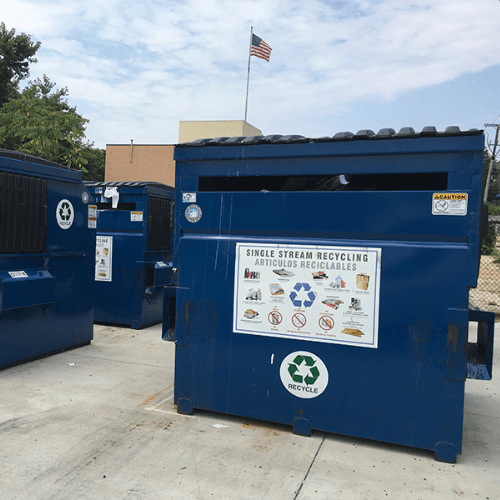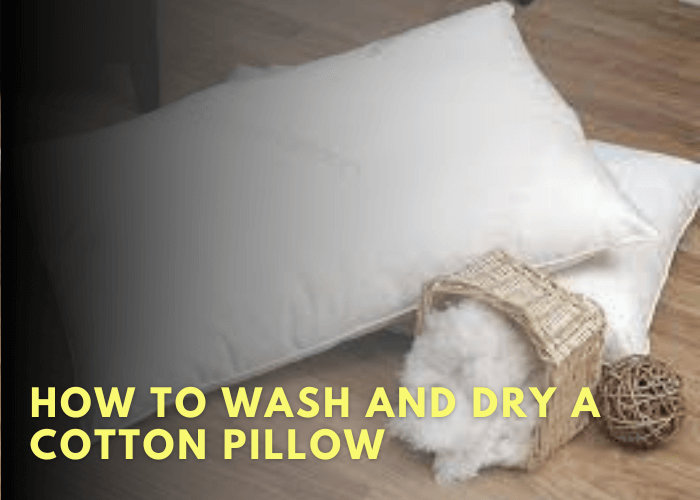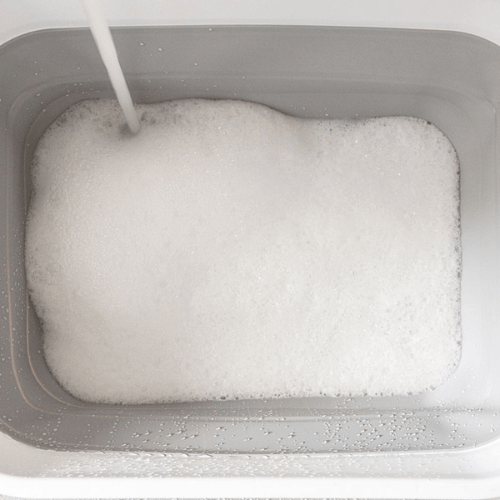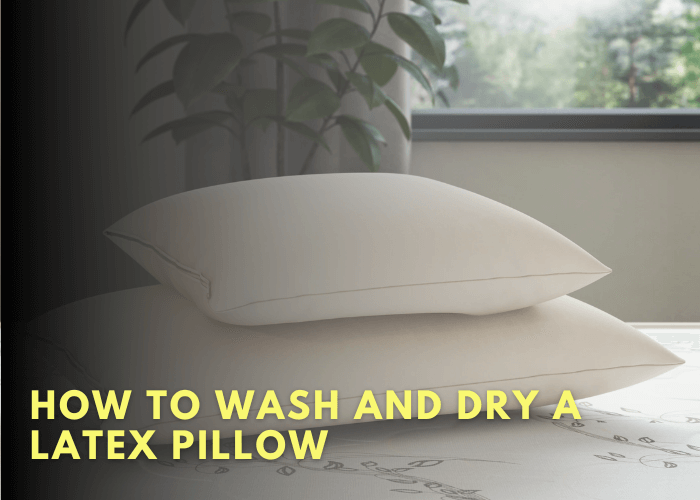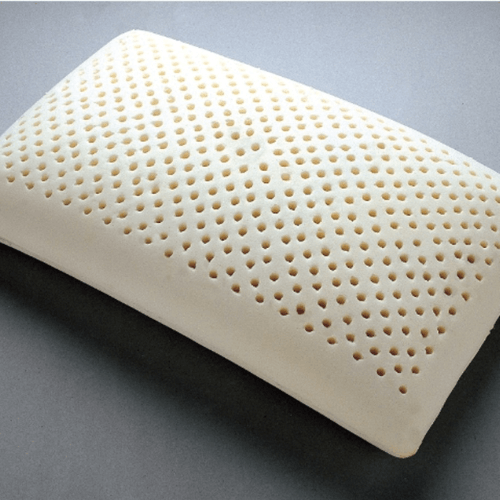A good night’s sleep is essential for a healthy lifestyle. But do you know the right way to sleep? Should your shoulders be on the pillow when sleeping?
The answer to this question has been debated for some time, and understanding it can help you sleep better.
Muscle tension, neck pain, and even headaches can be caused by poor sleeping posture. In addition to disrupting your natural breathing pattern, the wrong position can also interfere with the quality of your sleep.
So should your shoulders be on the pillow when sleeping?
We’ll look at different opinions from leading experts around the world and provide advice on how you can adjust your sleep position for maximum comfort and support.
Keep reading to find out more!
Benefits Of Keeping Shoulders Off The Pillow When Sleeping

When sleeping, keeping one’s shoulders off the pillow can offer several benefits.
For starters, this position helps to reduce neck strain and improve posture.
Laying with one’s shoulders off the pillow puts less pressure on the cervical spine, which can help to prevent soreness and discomfort throughout the night.
It also encourages a more neutral sleeping position that keeps the spine in line with the body as a whole.
Additionally, not having your shoulders on the pillow may also help to reduce snoring.
When laying flat on the back with both shoulders on the pillow, this may cause airways to become blocked and lead to snoring.
However, keeping one’s shoulder off can alleviate this issue by allowing air more freedom of movement within your throat and nasal passages.
By positioning one’s shoulder off the pillow when sleeping, it is possible to experience better quality rest – which is essential for overall well-being.
Without such disruption or restriction as caused by having both shoulders on the pillow, sleep can be deeper and more restful – improving energy levels during waking hours.
Potential Drawbacks Of Keeping Shoulders Off The Pillow When Sleeping
The potential drawbacks of keeping shoulders off the pillow when sleeping are worth considering.
These can include neck pain and discomfort, as well as decreased quality of sleep.
When sleeping without the support of a pillow beneath your shoulders, your neck is left unsupported.
As a result, it’s possible to experience discomfort or even pain in your neck.
Furthermore, you may find that you don’t achieve the same level of deep sleep that you would if your head were adequately supported by a pillow during slumber.
This can lead to an overall lower quality of sleep and leave you feeling tired throughout the day.
It’s important to note that not everyone needs to keep their shoulders off the pillow while sleeping.
Everyone’s body is different and each person should take into account their own individual needs when deciding how to position themselves in bed each night.
How To Sleep Comfortably Without Shoulders On The Pillow

Sleeping without shoulders on the pillow can give your body a more natural curve and help prevent back pain.
It can also help reduce snoring and improve breathing by keeping the airways open.
To achieve this position, start by lying on your back with your head slightly elevated.
Place a thin pillow or folded blanket underneath your neck for support and place another thin pillow under your knees to keep them bent and relaxed.
Make sure that you’re not too close to the edge of the bed, as this could cause you to roll onto your side during the night and put strain on your back.
If you’re a side sleeper, try placing a large, firm pillow between your legs instead of under just one knee.
This will help keep you in an optimal position throughout the night while still providing some cushioning for comfort.
You may also want to experiment with different thicknesses of pillows to find what works best for you – some people prefer thinner pillows while others find thicker ones more comfortable.
No matter which position you choose, make sure it doesn’t cause any discomfort or stress on any part of your body – if it does, adjust accordingly until it feels better!
Sleeping in a comfortable position is essential for getting restful sleep and preventing aches and pains over time.
Causes Of Shoulder Discomfort When Sleeping
Sleeping with the shoulders on the pillow can cause discomfort for many people. To understand what causes this, it’s important to recognize these four primary sources of shoulder pain:
- Poor sleeping position. If your body is not in a natural alignment when you’re sleeping, your shoulders may be strained by pressure and tension.
- Poor mattress support. An old or unsupportive mattress can leave your shoulders unsupported, leading to stiffness and soreness in the morning.
- Stress or anxiety. People who experience anxiety or stress during sleep may tense their shoulders up and cause pain while they’re sleeping.
- Medical conditions like arthritis or tendonitis can also lead to shoulder pain while sleeping, due to inflammation or swelling in the joint area.
These are some of the common causes of shoulder discomfort when sleeping, but there are other factors that could contribute as well.
Factors such as age, bad posture, obesity, and incorrect pillow size could all play a role in causing shoulder pain while you sleep.
Regardless of the cause, it’s important to take steps towards alleviating any discomfort experienced from sleeping with your shoulders on the pillow.
How To Alleviate Shoulder Discomfort When Sleeping With Shoulders On The Pillow
Shoulders can cause discomfort when sleeping on a pillow. To alleviate this, there are some tips to make it more comfortable.
First, choose a pillow that fits your head and neck size.
It should provide support without being too high or too low. Additionally, make sure the pillow is not too firm; a softer pillow can help reduce shoulder pressure.
Lastly, adjust the arm position while lying down–the arms should be at a slightly lower level than the shoulders.
Second, when lying down, keep the shoulders off the pillow. This will help reduce tension in the muscles and joints in the shoulder area.
Try placing one arm under your head for extra support and keeping the other arm by your side or resting on top of the bedsheet.
Also consider sleeping with an extra small pillow between your arms for additional cushioning and comfort.
Finally, take breaks throughout the night if needed.
If your shoulders start to feel sore during sleep, take a moment to rest for a few minutes before continuing sleep.
Doing this can help prevent further discomfort from accumulating throughout the night and help you stay comfortable while you sleep.
Transitioning into another position can also give you relief; try sleeping with your back or side against the mattress instead of using pillows to prop up your head and shoulders – both are good positions that don’t require your shoulders to be on the pillow
How To Reduce Shoulder Pain

These tips will help bring no more shoulder discomfort when you’re snoozing. Here, let me give you a few tips on how to make it work:
- Stretch before bed: This will help loosen up your muscles and joints before you hit the hay.
- Sleep on your back: This can be especially helpful if you tend to sleep on your side or stomach and have discomfort in those positions.
- Use a firm mattress: A firmer mattress can help keep your spine aligned while relieving stress and tension from any pressure points in your body.
- Keep pillows low and light: Keeping pillows low and light will help prevent pain from building up in your neck, shoulders, and back throughout the night.
So there you have it – an easy way to get rid of shoulder pain without relying on pillows for comfort!
How To Choose The Right Pillow For Sleeping Comfort
Everyone needs a good night’s sleep, but finding the right pillow is key. According to a survey of 2000 American adults, 81% said that the quality of their pillow affects how well they sleep.
With the right pillow, you can improve your sleeping comfort and reduce shoulder pressure. Here are 7 tips for choosing the right pillow for sleeping:
- Look for a pillow with adjustable support. For side-sleepers, having firm support at the neck and shoulders is essential to keep your spine in alignment.
- Consider your sleeping position when purchasing a pillow – choose one that supports your head and neck in whatever position you prefer to sleep in.
- Take into account both your height and weight when making a purchase – heavier people should opt for firmer pillows, while lighter people may prefer softer ones.
- Make sure to buy a hypoallergenic pillow if you have allergies or sensitivities to certain materials.
When shopping for a new pillow, it’s important to find one that suits your individual needs and preferences – there is no one-size-fits-all solution!
Tips For Maintaining Proper Shoulder Position
The picture of a peaceful night’s sleep is often one with shoulders laid flat on the pillow. But for those looking to improve their sleep quality, it may be best to keep those shoulders off the pillow.
To maintain proper shoulder position for maximum comfort while sleeping, there are some tips and tricks to keep in mind.
First, consider the type of mattress that’s being used.
A mattress should provide ample support while allowing the spine and neck to stay aligned as much as possible when sleeping on one’s side or back.
An adjustable base can also be helpful in achieving this alignment.
Next, think about how pillows are positioned under the head and neck.
The right pillow can help ensure that the spine remains neutral and comfortable during sleep by providing additional support for both the head and neck.
Pillow height should be adjusted accordingly based on individual needs and body size; too high or too low can cause discomfort or even pain if not properly aligned with shoulder position.
Finally, it’s important to remember that proper shoulder positioning is key for achieving maximum comfort while sleeping.
Adjusting mattress firmness levels and experimenting with different pillow heights can help find just the right combination of support and comfort needed for a good night’s rest—even if that means keeping those shoulders off the pillow.
Frequently Asked Questions
What Happens If I Keep My Shoulders On The Pillow When Sleeping?
The pillow, a symbol of comfort and rest, takes on a new meaning when used as an anchor for the shoulders.
It is a reminder of the importance of maintaining proper posture while sleeping to achieve optimal rest.
Like a bridge between the body and the bed, it acts as a stabilizing force to ensure correct alignment of the body.
Using the pillow in this manner can have both positive and negative effects. On one hand, having your shoulders on the pillow can help keep them in proper position throughout the night, which is beneficial for those with back or neck pain.
On the other hand, if left unchecked, it can lead to shoulder pain due to pressure from sleeping in an unnatural position.
Ultimately, whether or not you should keep your shoulders on the pillow when sleeping depends on your individual needs and preferences.
If you experience chronic pain or stiffness in your shoulders or neck after sleeping without them on the pillow, then it may be beneficial for you to use one.
Otherwise, using a pillow may be more of a hindrance than help. In any case, always make sure that whatever position you sleep in provides optimal comfort and support for your body.




